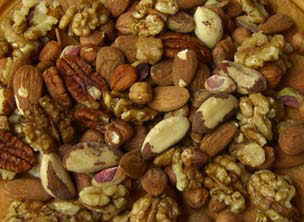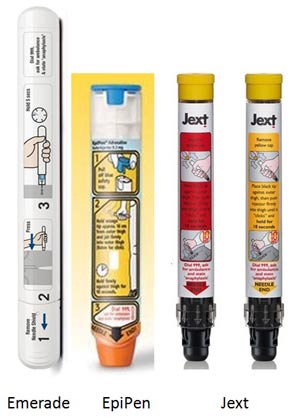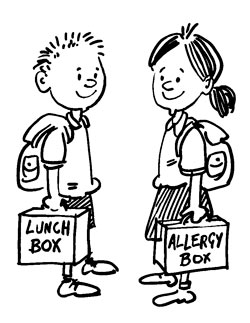|
|
An Introduction to peanut and tree nut allergies – what you need to know and what you need to do |
FoodsMatter editor, Michelle Berriedale-Johnson, explains what you need to do when you or your child have been diagnosed with a treenut or peanut allergy. |
|
I have (or my child has) been diagnosed with a peanut or treenut allergy – what do I need to do? First things that you need to do
Who do I need to tell? The family
Child-minders or nurseries It is very important that you talk to the nursery or child-minder if your child goes to either. Child-minders may not be prepared to accept the responsibility of peanut allergic child but nurseries should be able manage the situation. A care plan will be of great help but you still need to discuss the child’s needs in detail with them. You also need to know that they know how to use an auto-injector and are prepared to do so if needed – and that they have a proper emergency procedure. Schools
Your and your children’s friends
Other care-givers If you ever leave your child in the care of another organisation (e.g. a piano teacher, a Scout pack or Sunday School), it’s also vital that they know your child’s allergy needs, and that they know what to do in the event of an emergency. Very important: Make sure that everyone has your phone number and knows that, if they think you or your child might be having a serious reaction, they should always call 999 and tell the operator that someone is suffering from anaphylaxis (pronounced ana-fill-axis).
What do I tell my child? This will depend very much on the age of the child. If very young:
Once they go to school:
Teenagers You cannot ‘tell’ teenagers anything very much, but you can ’encourage’ them…. So:
What do I do if I eat or my child accidentally eats something containing peanuts or treenuts?
What else can I do to keep myself or my child safe?
Why has this happened ? No one really knows what has caused the massive rise in the incidence not only of peanut allergy (from almost unheard of 50 years ago to one in 70 today) but of allergy in general. But there are many theories.
Is there any cure or will you or your child grow out of a peanut allergy? People do grow out of peanut and nut allergy but it is far less common for a peanut or nut allergic child to grow out of their allergy than an egg or milk allergic child. So you should assume that a peanut allergy will be with them for life. However, some interesting work has been going on in research laboratories in both the UK and USA on peanut desensitisation or immunotherapy. In immunotherapy you give an allergy sufferer a tiny amount of their allergen and gradually increase the dose thus ‘educating’ their immune system not to see it as an enemy (never try this at home! It can be very dangerous, and is normally conducted at hospitals where resuscitation equipment is available). For more on immunotherapy see Linda Gamlin's article here. Although desensitisation may never allow peanut allergy sufferers to eat peanuts freely, it would hopefully reduce their sensitivity to the point that they would be able to tolerate traces of peanuts in other foods, or peanut dust in the air, without ill effect – allowing for a massive improvement in their general quality of life. This treatment is not yet widely available but may well become so over the next five years.
For lots more really useful information on peanut and tree nut allergy see the peanut and treenut allergy section of the FoodsMatter site, the Anaphylaxis Campaign site in the UK, the FARE site in the US or Allergy & Anaphylaxis Australia in Australia or New Zealand.
Where will you find them?
Some unexpected places in which you might find peanut or peanut products:
NB * Research would suggest that peanut allergic people do not react to refined peanuts oils although very sensitive people should still be careful. Treenuts and where you might find them (not an exhaustive list…) 
Common treenut based products to be aware of: (not an exhaustive list…)
If you found this article interesting, you will find many more articles on peanut and tree-nut allergy here, and reports of research into the conditions here. NB Information on this site is not a substitute for medical advice and no liability can be assumed for its use. Back to top |

 You need to be sure that you have your Adrenaline/Epinephrine Auto-injector pen (
You need to be sure that you have your Adrenaline/Epinephrine Auto-injector pen ( They need to know that if they eat something and then ‘feel funny’ – tickly throat or lips, short of breath – they must tell an adult immediately.
They need to know that if they eat something and then ‘feel funny’ – tickly throat or lips, short of breath – they must tell an adult immediately. Other names for peanuts:
Other names for peanuts:










